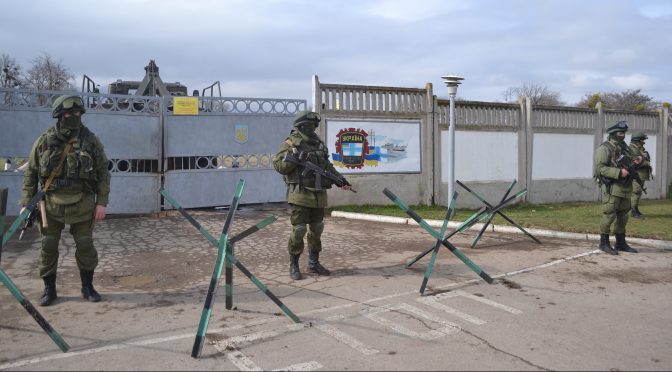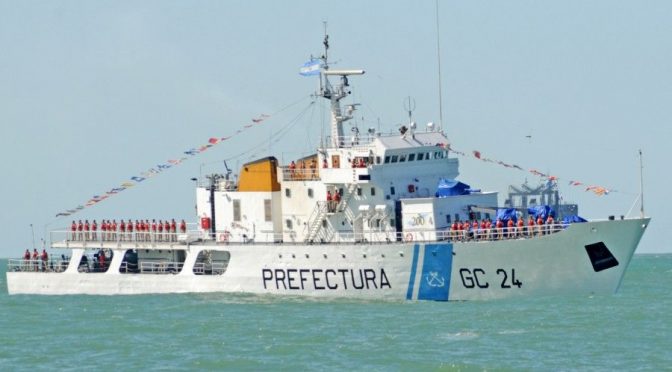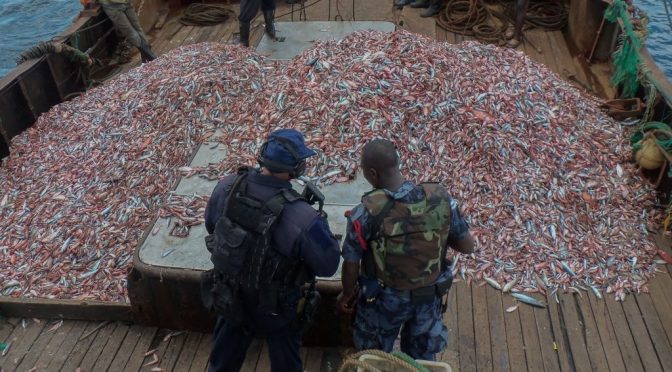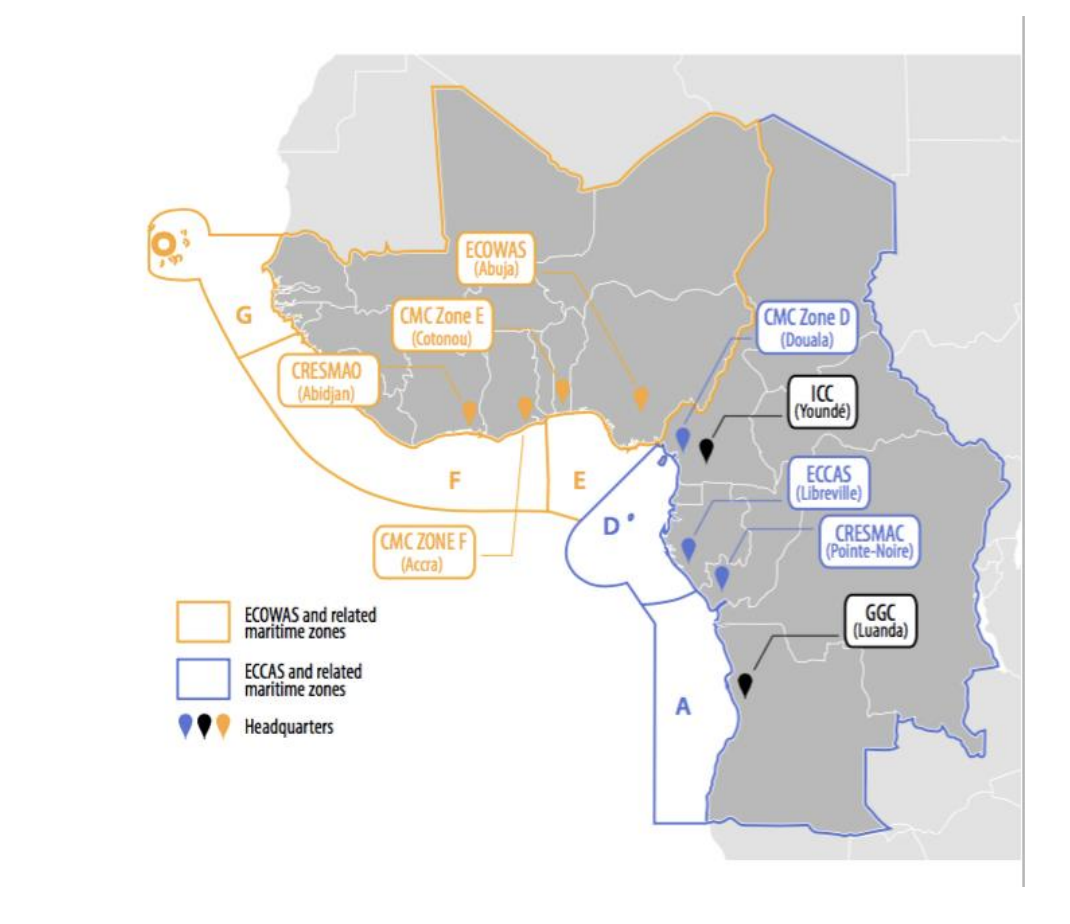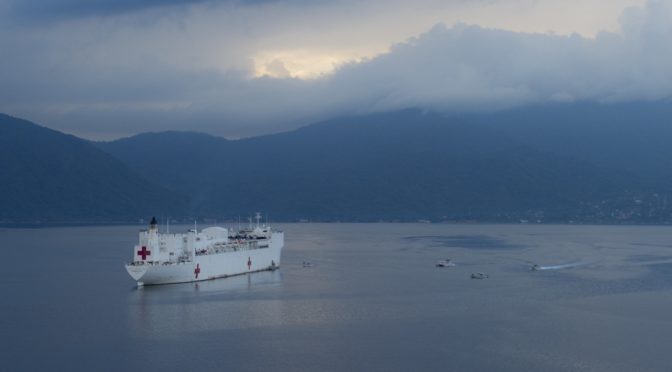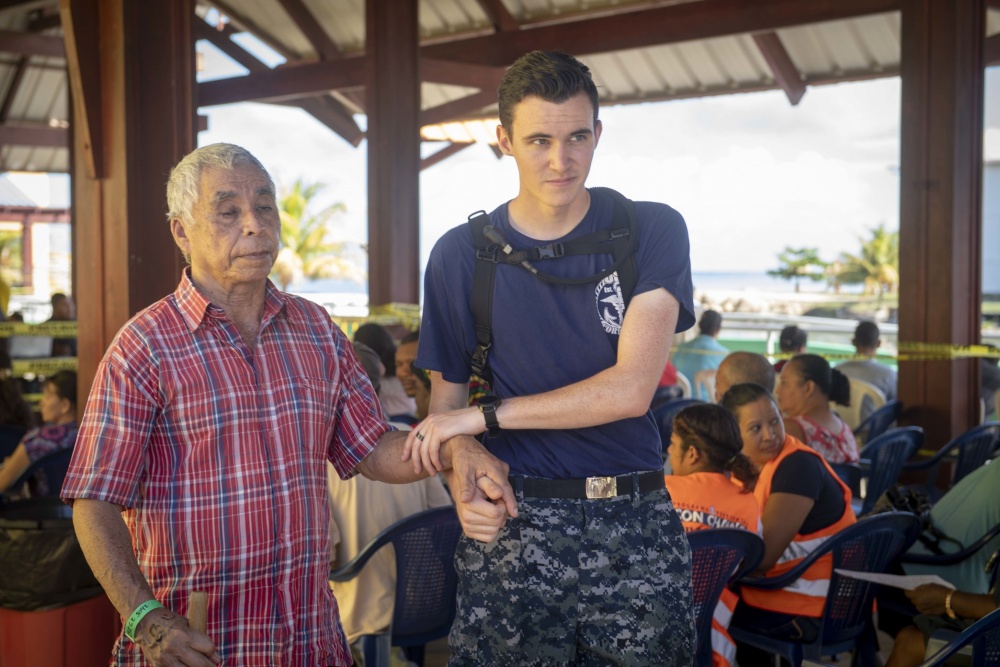By Jonathan Hall
Almost five years following the Minsk Agreements, the war in Ukraine has claimed the lives of over 13,000 individuals. While much of the attention has been on the annexation of Crimea and continuous fighting throughout the Donbas region, Russia has more recently added a maritime component to its campaign with aggressions in the Sea of Azov. The Secretary of the National Security and Defense Council of Ukraine, Oleksandr Turchynov, sees the possibility of the region being used as a “springboard for further expansion,” a land invasion of Mariupol being his greatest concern. While many may fear expansion into the land environment, the far more likely scenario is westward progress by Russian naval forces, furthering their disruptive campaign off Ukraine’s coastline.
Linking the Seas
Western defense planners and analysts often refer to the Black Sea and the Sea of Azov as independent entities. Distinct in their own rights, the latter largely unknown until recent events, what is important to note is the Russian government views them as inextricably linked. In 2003, President Putin reiterated this in stating, “the Azov-Black Sea basin as a whole…the zone of our strategic interests.”
Within this context, a useful analytical framework of inspection would be Russia’s “Boa Constrictor Strategy” (Тактика Удава). Attempting to economically strangle the Ukrainian government, the blockade of the Kerch Strait serves as the first example to do so in the maritime environment. Hamstringing shipment to and from the port cities of Mariupol and Berdyansk, located in the Sea of Azov, Russia is likely to continue these economically disruptive and militarily aggressive activities in the greater Black Sea region. The object of such operations would invariably be the littoral waters near Ukraine’s western port city – Odessa. While maintaining the status quo – relative restraint in deploying land forces – the Kremlin could similarly hamper maritime commerce, endanger sea lines of communication (SLOC), and therefore dissuade future investment in the region. Loss of industry and access to the sea via de facto Russian control of the remaining Ukrainian coastline could both financially cripple Kyiv’s economy and, in effect, landlock the country.
Fighting in the Gray Zone: From Land to Sea
Discussions of Russia’s operations often refer to its “gray zone” approach to warfare. Defined as, “Those covert or illegal activities of non-traditional statecraft that are below the threshold of armed organized violence; including disruption of order, political subversion of government or non-governmental organizations, psychological operations, abuse of legal processes, and financial corruption as part of an integrated design to achieve strategic advantage.”
In the Sea of Azov, there are already observed Russian gray zone methods in the maritime domain. Therefore, while the threat of a Russian land invasion should be considered, the threats facing Odessa – and the Ukrainian coastline writ large – likely will remain in the Sea. For several reasons, these incrementally disruptive hostilities, akin to ongoing naval tactics being employed by the Chinese in the South and East China Seas, should be Kyiv’s greatest worry.
First, an overt incursion on Odessa would necessarily involve Russia telegraphing the movement of its Black Sea Fleet – serving as host to a sizeable contingent of sea and land forces. Due to the augmented defensive capabilities installed by the Ukrainian military – its newly developed anti-ship “Neptune” cruise missile and modernized S-125 Neva/Pechora surface-to-air missile system – Kremlin strategists would likely advise against such a move. Although Ukraine’s personnel and equipment in the region would not ensure victory over a would-be invading Russian force, they provide the conventional deterrence required to allay concerns that Moscow believes it can quietly seize the region.
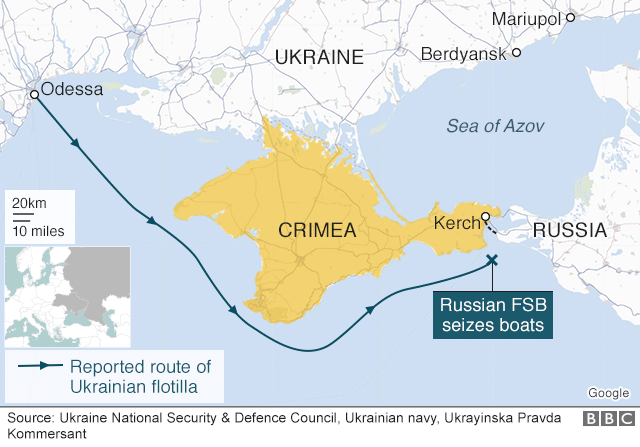
Second, despite doubts regarding open invasion, concerns abound that Russia may attempt similarly subversive activities in Odessa to what occurred in Crimea and throughout Donbas. The tactics used in the early years of the conflict – in annexing the Crimean Peninsula and creating the so-called Donetsk and Luhansk People’s Republics – were both geographically and demographically dependent and unlikely to be as successful if applied in western Ukraine.
In Crimea, the Kremlin’s “little green men” were able to assume control without widespread violence due to favorable conditions which do not exist in Odessa. The political environment on the peninsula, conducive for a Russian takeover, hosted a citizenry which was, for the most part, either emboldened by Russia’s sudden presence, indifferent, or silenced by fear.
Throughout Donbas, the disinformation campaign and political saboteurs were able to stoke the flames of discord required to launch the creation of the so-called autonomous republics. With Russian-backed separatists, private military contractors, and Russian regulars all taking part, control was effectively fractured from Ukraine’s federal government.
Geographically proximate to the Russian border, the Kremlin was able to either leverage the political environment preexisting in Crimea or, in the case of Donbas, fabricate one through its disinformation campaign, funding of separatist fighters, and covert transportation of Russian regulars across the border. According to a 2015 study by the International Republican Institute, roughly 25 percent of Odessa’s citizenry are ethnic Russians, with 78 percent citing Russian as the primary language spoken at home. The presence of ethnic Russians, often referred to as a fifth column – or minority group which can be leveraged – in Odessa has sparked concerns that a similar situation which unfolded in the east could be incited. However, the geographic conditions and element of surprise required are missing. Additionally important to note, the general political situation in the country was diametrically different to what it is today. When Crimea was annexed, and subsequent fighting in Donbas began, Ukraine’s federal government was dysfunctional and divided. Following the Euromaidan protests and deposition of then-president Yanukovych, several top officials abandoned their posts. Among them were the Ministers of Defense and Internal Affairs, the commander of the Internal Troops of Ukraine, and the commander of the Ukrainian Navy in Crimea (who convinced over 5,000 Ukrainian sailors to defect with him).
Finally, one possible reason for escalations in the Sea of Azov – Russia’s first major foray into the maritime environment against Ukraine – would be the Kremlin’s decision that further subversion on land would be either impossible due to increased Ukrainian resilience, or inadvisable due to international backlash. Regardless, the fact Moscow has chosen to add this maritime component to continue its incrementally aggressive gray zone approach supports the argument that any activities to Ukraine’s west – a “harder target” in military parlance – would similarly remain offshore.
Russia’s Black Sea Fleet
Russia’s Black Sea Fleet, after suffering two decades of decline following the collapse of the Soviet Union, has undergone more than a decade of serious reform, doubling its offensive capabilities since 2014. Prior to the annexation of Crimea, Russia had a basing agreement with the Ukrainian government. However, this agreement stipulated categorical limitations on personnel and equipment. Along with access to the port of Sevastopol, Moscow was allowed to garrison 25,000 troops, in addition to 132 armored combat vehicles, 22 military aircraft, and 24 pieces of artillery. In 2013, Russia was stationing 12,000 troops, zero tanks, 24 pieces of artillery, and 22 military aircraft. By 2018, those numbers rose to 32,000 troops, 40 tanks, 174 pieces of artillery, and 113 military aircraft – in addition to S-400 anti-aircraft missile systems, Bastion and Bal coastal defense missile systems, and Iskander short-range ballistic missile systems.
The Fleet, also host to several new advanced surface combatants and submarines – along with many warships transferred from the Caspian Sea Flotilla – is fulfilling the guiding principles highlighted in Russia’s 2015 maritime doctrine: “In the Black and Azov Sea, the foundation of the National Maritime Policy is the accelerated modernization and comprehensive reinforcement of the strategic position of the Russian Federation.”
These tenets were further discussed in the 2017 Naval Fundamentals document, emphasizing improvement of combat capabilities and joint operability with other branches of the military in Crimea. Moscow’s recent development of its Special Operations Forces (SSO) command is the most likely suspect to be used in a combined arms operation in the Black Sea. An example can be seen with the oil derricks near Odessa, which were illegally seized by special operations forces and are subsequently being guarded by several small warships – preventing any attempt by the Ukrainian military to retake them. While a less severe example, this low-risk operation represents one of many lessons for the Kremlin that this sort of incremental approach pays dividends. These “stealth seizures,” i.e. annexation of Crimea, naval blockade of the Sea of Azov, and the capture of the oil derricks are the hallmark of Russia’s approach in the region but by their nature are limited in scope.
Area of Operations: The Black Sea
Unlike the proximate waters of the Sea of Azov, the Black Sea is busy with international activity and with all parties involved interested in keeping the sea lines open for trade and joint military cooperation. In addition to the western littoral states (Romania, Bulgaria, and Turkey), the navies of the United Kingdom and United States have operated in the Black Sea in recent months. The Royal Navy’s HMS Echo entered the Black Sea and arrived at Odessa on 19 December, 2017. The UK’s Defense Minister, Gavin Williamson, later announced joint exercises would take place with the Ukrainian Navy in early 2019. In early January, the USS Fort McHenry (LSD-43) made a regularly scheduled sail through the Black Sea. The Fort McHenry, an amphibious ship, equipped with defensively oriented weapons, was followed more recently by a visit to Georgia by the USS Donald Cook (DDG-75), an Arleigh Burke-class guided-missile destroyer – sending a much more clear message to the Kremlin. Backing up this show of resolve, the U.S. announced it would send additional lethal aid to the Ukrainian military.
While international presence in the region is a possible deterrent, many factors complicate the helpfulness of foreign vessels in the region. First and foremost, there is a perennial question mark in regard to what form(s) of Russian aggression will incite a Western response. And even then, showing diplomatic support of the situation is of little good to an embattled Ukrainian military. Second, the Montreux Convention Regarding the Regime of the Straits, an agreement signed in 1936, presents a logistical impossibility to an ever-present U.S. Navy in the Black Sea. The agreement stipulates that an aggregate tonnage of all non-Black Sea warships in the Black Sea cannot exceed 30,000 tons (or 45,000 tons under special conditions), and they are permitted to stay in the Black Sea for no longer than twenty-one days. Russia, undoubtedly monitoring the U.S. Navy’s days at sea, could conceivably coordinate an operation during a lull of U.S. activity.
Defending Ukraine
The onus of defense, therefore, falls on the Ukrainian military. Prior to the aggressions in the Sea of Azov, for all intents and purposes the Ukrainian Navy lacked a coherent maritime doctrine within the overall military strategy. Suggested to have a “continental mindset,” the greatest cause for concern is always from the next impending land invasion. The most recent example was the build-up of Russian forces in its Western Military District, from which came no invading force. Rather than an abnormal development, prior to the annexation of Crimea, roughly 40,000 troops were amassed on Ukraine’s eastern border – used for purposes of intimidation and to mask subsequent asymmetric operations, rather than to be conventionally deployed.
Despite these issues of threat assessment, the Ukrainian Navy has maintained steady success in developing itself into a competent fighting force, notwithstanding losing the majority of its assets during the annexation of Crimea. The guiding principle toward renewed maritime capacity building in the Ukrainian Navy can be seen in the “mosquito fleet” concept first proposed by Captain Andriy Ryzhenko, the Navy’s deputy chief of staff for Euro-Atlantic integration. His idea is that despite budgetary pressures the navy should plan for “near-term procurement of small, fast, low-signature, well-armed boats and craft for various purposes.” The highly mobile proposed flotilla would serve well in the face of uncertainty presented by Russia’s subversive maritime activities.
Toward this goal, the Ukrainian Navy plans to commission two Gyurza-class armored boats and two Centaur-class fast assault craft sometime in 2019, and to assume command of two U.S.-built Island-class patrol cutters this summer. These efforts toward naval capacity building are the key component of the “New Strategy of the Naval Forces of the Armed Forces of Ukraine to 2035,” introduced by the Commander of the Naval Forces of Ukraine, Admiral Ihor Voronchenko in November 2018.
Moving Forward
As this gray zone approach continues to permeate the maritime environment, these aggressive asymmetric operations must remain an integral component of Ukraine’s military calculus. They are incremental in their approach, and below the threshold of war in their character. For these reasons they will be difficult to predict, deter, and defend against. However, the Ukrainian military has been and will continue to undergo reform with these very tenets in mind. Analyzing the tactics used in the Sea of Azov by Russia, similar operations in the South and East China Seas by China, and how they may be adapted to fit the Black Sea is the most advantageous starting point toward an effective plan of defense. As the Ukrainian military remains resilient, and its allies supportive, the defense of Western ideals and international rule of law will come through the sober realization that these low-scale acts of force and subversive maneuvers are here to stay both within Ukraine’s borders and off its coast.
Jonathan Hall is a security and political risk analyst focused on Eurasian geopolitics, military affairs, and emerging technologies. He can be found on Twitter @_JonathanPHall.
Featured Image: Military base at Perevalne during the 2014 Crimean crisis. (Wikimedia Commons)

